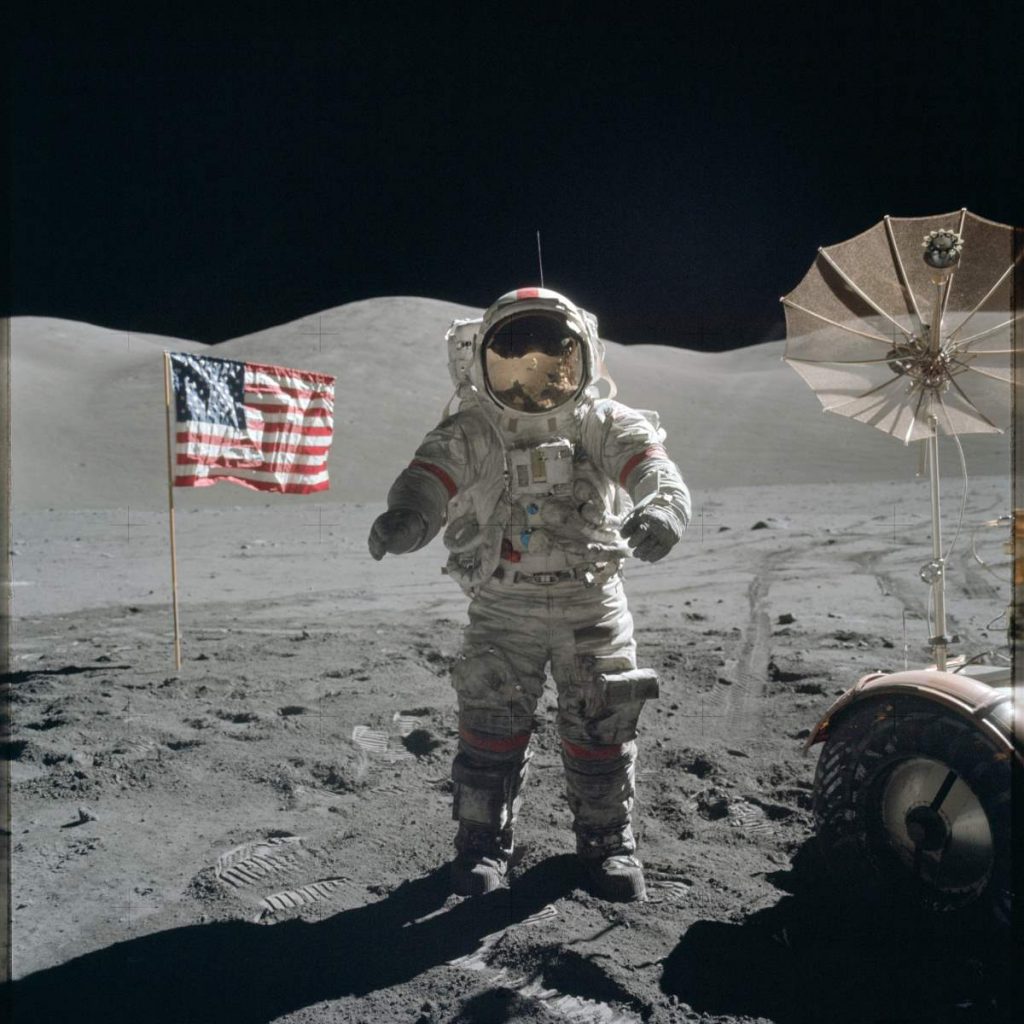As NASA plans to return to the moon, will we be able to see the astronauts on the Moon via a really strong telescope, when they were landed?
The short answer is no. Even Hubble Space Telescope can’t see an astronaut on the Moon.
According to NASA, the Hubble Space Telescope telescope is able to lock onto a target without deviating more than 7/1000th of an arcsecond, or about the width of a human hair seen at a distance of 1 mile (1.6 km). This can sound incredibly strong, but the space is big. The distances between celestial objects are enormous.
Here’s why you can’t see an astronaut on the Moon, even through a strong telescope
Here are the calculations:
Hubble Space Telescope has an angular resolution of about 7/1000th of an arcsecond. The distance between Earth and Moon is about 384,000 km (238,600 miles).
1 arcsecond is 1/3600 degree. A circle is 360 degrees.
7/1000 arcsecond on a circle with a radius of 384,000 km is:
2 * 384,000,000 * π * 7 / 1000 / 3600 / 360 = 13 meters or 42 feet.
(π = 3.14)
So, even Hubble Space Telescope cannot spot an astronaut on the moon. Its resolution for the Moon would be 13 meters or 42 feet per pixel.
What about ground-based telescopes?
For example, the Canada-France-Hawaii Telescope (CFHT) is one of the strongest telescopes o Earth. Part of the Mauna Kea Observatory, it is located near the summit of Mauna Kea mountain on Hawaii’s Big Island at an altitude of 4,204 meters (13,793 feet).
The CFHT has a median seeing of 0.43 arcseconds. So, if we do the calculation again:
2 * 384,000,000 * π * 0.43 / 3600 / 360 = 800 meters or 2,624 feet (per pixel).
(π = 3.14)
So, the answer is no. We cannot see an astronaut on the moon waving to us even via the strongest telescope on Earth.

Sources
- Hubble Space Telescope on Wikipedia
- About the Hubble Space Telescope on the NASA website
- “How to see Apollo Moon landing sites” on the Sky and Telescope website
- Canada-France-Hawaii Telescope on Wikipedia
- Moon Landings: All-Time List [1966-2025] - February 2, 2025
- What Is Max-Q and Why Is It Important During Rocket Launches? - January 16, 2025
- Top 10 Tallest Rockets Ever Launched [2025 Update] - January 16, 2025
